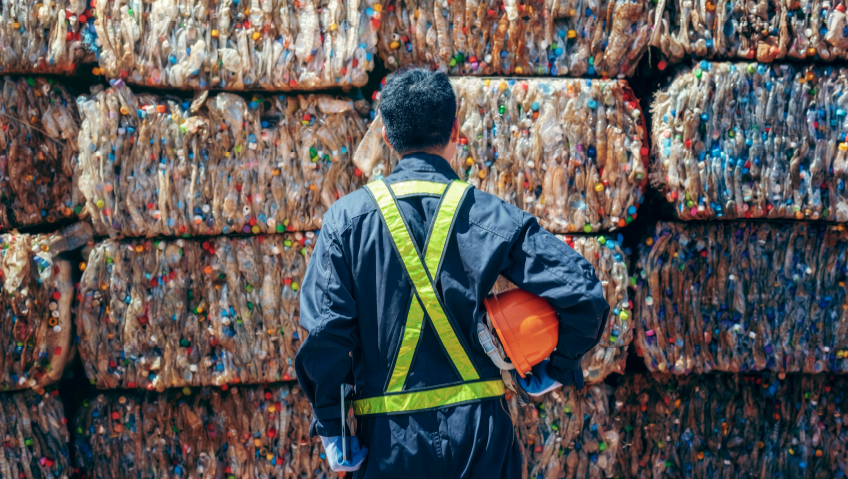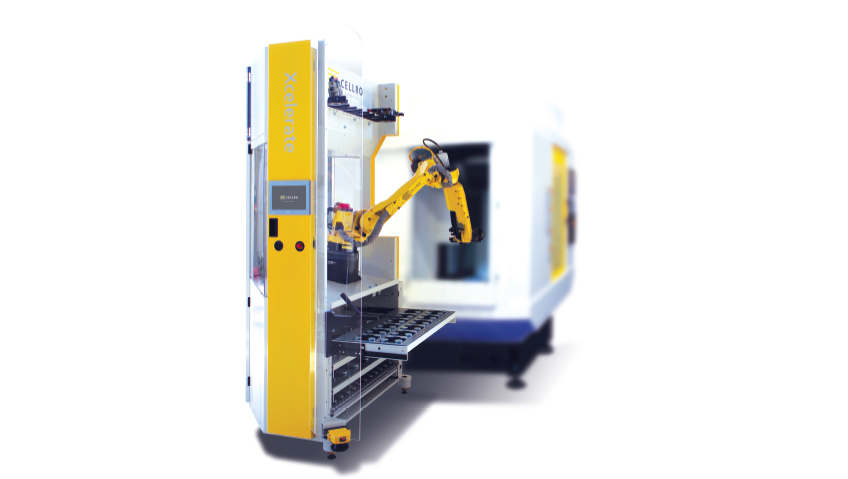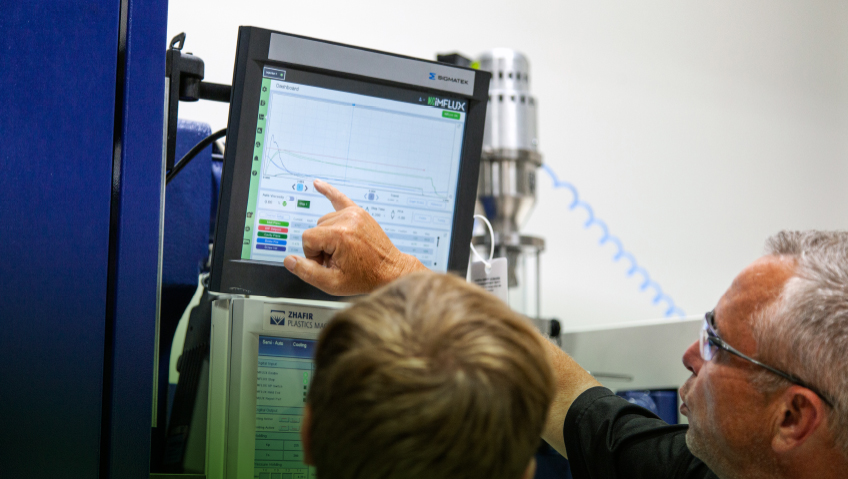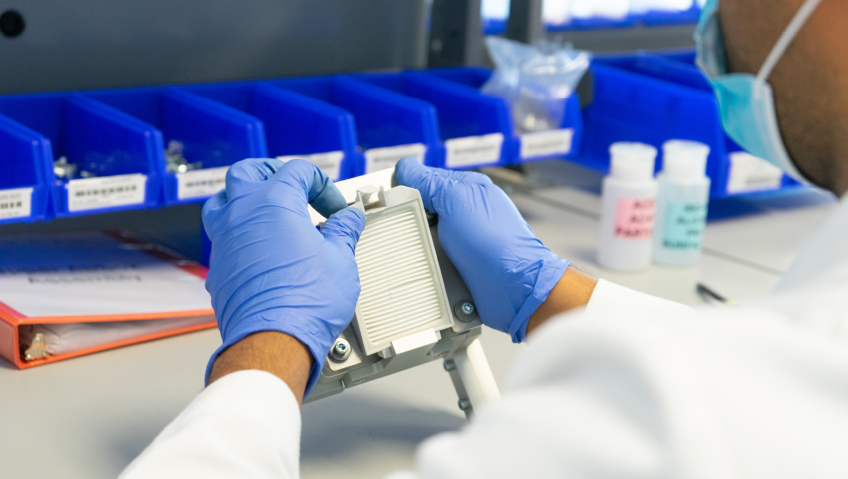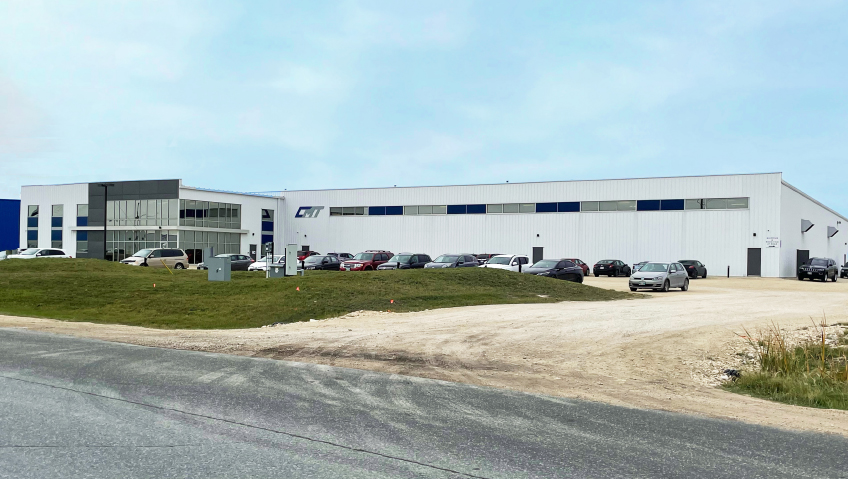Reduce, reuse, recycle: We’ve all heard the slogan, and most of us try our best to adhere to the principles of buying less, adopting green initiatives when possible and carefully loading up the recycling bin for weekly collection. But after the Blue Box is emptied and the truck drives away, what do we really know about the ensuing process? How much of what we diligently attempt to recycle to save the planet actually makes a difference? Wanting to help stop climate change, mitigate waste in landfills and eliminate ocean pollution isn’t as clear cut as we might think, because the recycling industry is a lot less about saving the environment and a lot more about economics.
Canadians throw out approximately 3.3 million tons of plastic each year, according to a 2019 study commissioned by Environment and Climate Change Canada (ECCC), almost half of which is packaging. Of that, more than three-quarters goes to landfills, a small amount is incinerated and about one percent ends up directly in the environment. Astonishingly, only 305,000 tons — or nine percent — of that is actually recycled, according to the study.
There’s money to be made for recycling companies, but processing and sorting is expensive, and it’s often cheaper to dump plastic in landfills than try to recycle it. However, it’s not only a financial issue, but a technological one as well, as available technology can only do so much.
In Canada, mechanical recycling is the most popular method used, which means sorting and shredding before melting down to create new products. However, the plastic must be first sorted and cleaned properly which can be a difficult process to meet the requirements.
There are also numerous different types and qualities of plastics manufactured that require different melting processes, and when dyes or toxic ingredients are added to the mix, it can be even more complicated. For instance, there are only four types of plastics that are generally recycled: polyethylene terephthalate (PET), found in carpets, cups and water bottles; high-density polyethylene (HDPE), found in milk jugs, outdoor furniture and pipes; low-density polyethylene (LDPE), found in bread and trash bags, and polypropylene (PP), found in straws, auto parts and juice bottles, with most other plastics clogging the landfills.
So why is recycling heralded as a responsible and even necessary solution when in reality it accounts for so little of our actual waste handling? Living in a consumer-driven, disposable society of single-use plastics and often excessive packaging coupled with the notion that, for instance, updated cell phones and new vehicles need to be purchased every year, it’s no surprise that we keep buying, and the world is unable to keep up with the pace of waste.
Today the majority of plastic waste in this country comes from businesses, institutions and industry, yet most provincial or regional waste management practices focus on collecting plastic waste from homes.
For personal households, programs like Ontario’s Blue Box Program handle household recyclables such as aluminum cans, water, pop and juice bottles, empty aerosol cans and newspapers. Collected at the curb every week or two, these programs encourage people to carefully divide their garbage. But are they just helping people feel less guilty about waste by creating a somewhat false belief that we’re helping send less waste to landfills?
Since 2008, the Blue Box Program has an overall provincial 60 percent collection target, and in October 2020, The Ontario Ministry of the Environment announced a transition plan to move the program to a 100 percent producer responsibility structure to help reduce municipal cost while increasing overall collection rates. But if people are working hard to fill their recycling boxes responsibly, it’s disheartening to know how little is actually recycled.
When it comes to returnable beverage containers, particularly wine and beer, the deposit-return system means all container deposits are fully refundable, allowing purchasers to get something back financially, while encouraging recycling. This model seems to have more success.
Using Ontario as an example, refillable containers make up approximately 85 percent of the total beer containers sold, with an average reuse lifespan of 15 times, while 97 percent of all refillable beer containers are returned.
In 2007, the Liquor Control Board of Ontario started its Deposit Return program, also known as “Bag It Back,” and began collecting 10- and 20-cent deposits on all alcoholic beverage containers, which helps reduce the amount of cans and bottles being collected at the curb.
But although the program does encourage recycling at a personal level, the real problem starts with consumption. The “reduce” part of reduce, reuse, recycle is what really needs to be addressed going forward. Education is key for not only the general public, but manufacturers as well, who have the power to create more easily recyclable products.
There also needs to be uniformity across the board regarding what can be recycled and what cannot, as some municipal sorting facilities can accept most plastics while others can’t. Without a clear plan and concentrated coordination, more and more waste will end up in landfills and the oceans, where every year eight million tons are tossed.
While the world can’t eliminate all plastic entirely, the push to blindly consume can change, along with making more educated decisions when buying and manufacturing, and helping larger companies understand the importance of recycling responsibly.
For larger manufacturing companies, the issue can be a little more complex, especially for those dealing with toxic or environmentally sensitive waste. While many companies are becoming more aware and more conscientious about the waste they produce and how to best handle its disposal, obtaining that information and putting it to good use can be time consuming. With paybacks available for responsible disposal, it only benefits manufacturers to have a plan for how best to recycle within the company. Whether it’s paper, metal or plastic, recycling can not only make money for the company, but help the environment.
To encourage facilities to embrace recycling, knowledge and education goes a long way. Once a company knows exactly what their waste is, it can then be disposed of properly.
Recycling practices within a company need to be clear and concise and, above all, easy to follow and maintain. If they’re too complex or time consuming, it will be that much more difficult to follow for employees. Some tips for recycling for manufacturers include creating systems around company waste that results in easier handling and removal, using non-hazardous materials whenever possible instead of hazardous and toxic substances, and making waste reflect the company’s personal vision and mission statement. Knowing the company is actively trying to do better will go a long way to attracting customers.
While recycling may seem like a pointless task at times, it doesn’t mean it’s completely fruitless. As more companies become aware of the damage being done, hopefully recycling processes will advance in order to catch up and tackle the waste at all levels, regardless of financial gain.
Ultimately, the best tip for consumers might be simpler than we want to admit: consume less. Making more informed choices and paying attention to what you’re buying and how it will eventually be disposed of can make the biggest difference to manufacturers who will be hit where it matters — in their wallets. As society as a whole becomes more cognizant of how damaging some waste materials can be and how landfills are filling up, it’s important to realize how both individuals and companies contribute to waste and how everyone can make decisions that make a lasting difference.

